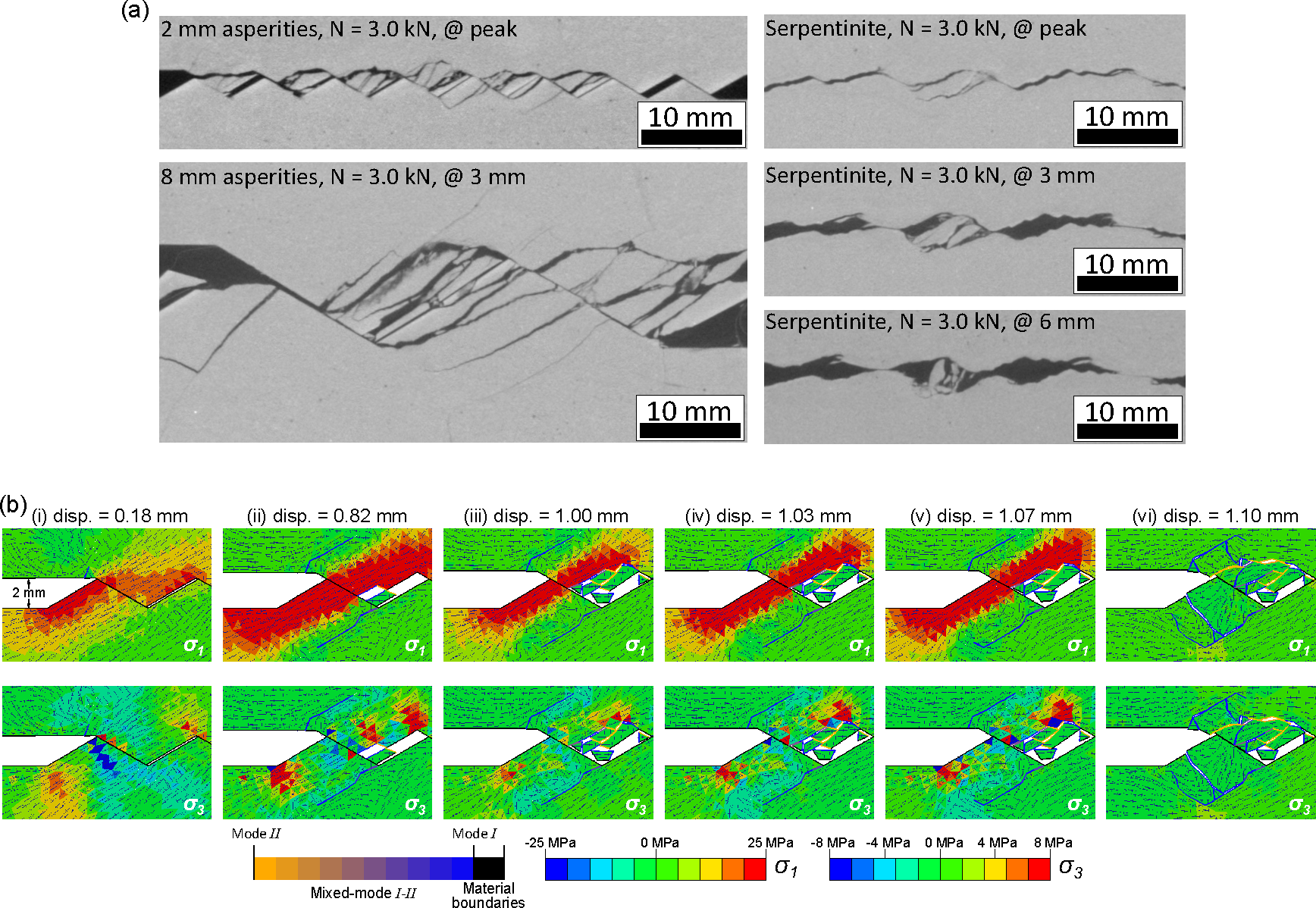The multi-facetted experimental and numerical investigation forming the PhD thesis of Geomechanica’s Dr. Bryan Tatone entitled “Investigating the evolution of rock discontinuity asperity degradation and void space morphology under direct shear  ” demonstrated the first experimentally-supported simulation of discontinuity shearing using a FDEM modelling approach. Dr. Tatone’s work coupled micro-Computed Tomography (micro-CT) with FDEM modelling to better understand the failure mechanisms of asperities and identify the limitations of numerically simulating the shearing process.
” demonstrated the first experimentally-supported simulation of discontinuity shearing using a FDEM modelling approach. Dr. Tatone’s work coupled micro-Computed Tomography (micro-CT) with FDEM modelling to better understand the failure mechanisms of asperities and identify the limitations of numerically simulating the shearing process.
Geomechanica is continuing work on the modelling of discontinuity shearing using our Irazu FDEM software. In particular, the substantial speed-up offered by GPU acceleration allows one to consider larger-scale problems. This ability to explicitly capture realistic discontinuity morphology is of potential benefit to a wide range of rock engineering problems, including those concerned with enhancing rock mass permeability (e.g. well stimulation) and those concerned with minimizing changes to rock mass permeability (e.g., nuclear waste storage). We look forward to working together with fellow researchers to exploit this capability of our software.
The image above shows results from the thesis of Dr. Bryan Tatone showing agreement between experimental and numerical observations: (a) Damage evolution in discontinuity replicas as observed using micro-CT imagery; (b) Numerically simulated damage evolution of a single asperity showing the principal stress distribution together with the mode of fracturing.
